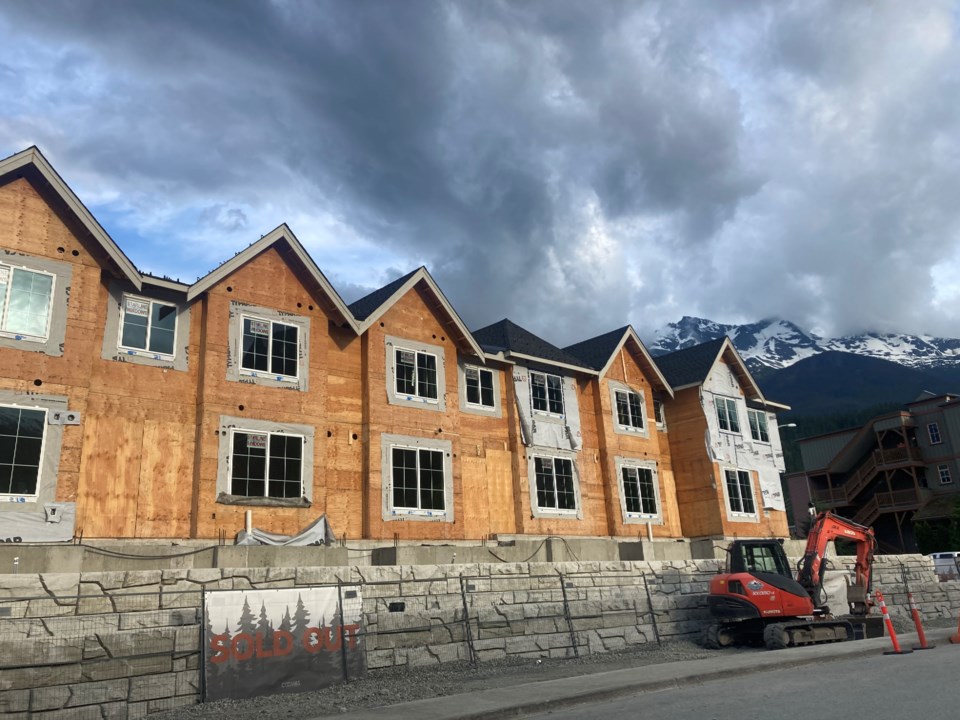With a handful of significant housing projects in the planning stages or under construction, a rapidly changing demographic, and rising demand for inter-regional trail and bus connections, the Squamish-Lillooet Regional District (SLRD) has a lot on its plate for the coming year.
The SLRD Regional Growth Strategy (RGS) helps guide how the regional district takes on these challenges and serves as a broad policy framework that sets the direction of population growth in the SLRD for all areas except Area A.
At the Dec. 14 SLRD board meeting, directors listened to an annual update on the progress of the RGS’ 11 goals, which provided a snapshot of the accomplishments met in 2022—and what will guide the regional district going into 2023.
“It’s sort of a high-level, directional planning document that takes into account the Official Community Plans of each municipality and then sets the boundaries for where growth can go within our region,” SLRD chair Jen Ford said.
“It’s kind of a smart way of saying Squamish won’t grow beyond this number of people without agreement from the neighbouring communities and what that looks like, so it’s a very intentional first look at growth.”
Affordable housing
Addressing the dire housing crisis in the region is one of the regional district’s top priorities, and one that the SLRD has made a fair bit of progress on in 2022.
At the end of November, an amendment to the Official Community Plans in three of the four district areas added a suite of new guidelines and practices to guide the future construction of affordable housing in the region. The amendment includes new zoning regulations requiring all new multi-unit developments to have a minimum of 15 per cent affordable housing.
With this goal in mind, the SLRD is also requiring a number of proposed developments to include more affordable housing, including expansions in Furry Creek, Britannia Beach, WedgeWoods and the Mount Currie commercial area.
In the case of the proposed Furry Creek expansion, the developer must provide 60 affordable rentals and 60 affordable ownership units, with these units covenanted for employees.
In the WedgeWoods Phase 7 expansion, new homes will require one covenanted long-term rental suite, while six lots will be offered for below-market rates. A change that could allow long-term rental suites in addition to carriage homes in the neighbourhood is also currently under consideration. If implemented, it could lead to increased density and more than 100 new bed units in the community.
In Mount Currie, the Lil’wat Mainstreet Development, which recently passed third reading at the SLRD, will add 53 affordable housing units along with six commercial developments in the heart of the community. Providing housing for between 100 and 120 people, it is expected the project will drastically help alleviate some of the housing challenges in the community.
Improving transportation links
The SLRD is also hoping to leverage new developments to tackle another one of the goals set out in the RGS: improved transportation links. The SLRD continues to advocate for the provincial government to create a regional transit system connecting Furry Creek to Mount Currie.
In anticipation of such a service expansion, the SLRD requires certain new developments to include infrastructure such as new bus stops.
While the region waits for a regional transit system, significant expansions to the regional trail system are moving forward over the next two years. Funding for upgrades to the Friendship Trail between Mount Currie and Pemberton was approved in 2022, and will start construction in 2023.
The missing piece of the Sea to Sky Trail from Gord’s Garden to Nairn Falls will start construction in 2023, completing the route from Whistler to Pemberton. The SLRD has also secured a third of the funding required for the section of trail between Cheakamus Canyon and Chance Creek, with construction estimated to start in 2024.
Ford believes the regional district has made the most progress over the last year on affordable housing and emergency preparedness, particularly with new wildfire mitigation measures in Area C standing out as a notable accomplishment.
“I would say the work we’ve done on wildfire in Area C has been really important. It’s taken seriously the B.C. FireSmart funding that we’ve received, and that’s been throughout the region. Each area does it differently, but what that looks like on a regional scale really supports each neighbourhood and each community,” Ford said.
“The affordable housing piece is also really important. We’re taking the amount of pressure seriously in the neighbourhoods, communities, and unincorporated areas, because people certainly want to see a lot of new housing built. We’re feeling the pressure, and so we’re taking that seriously.”




